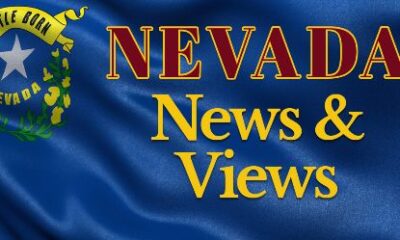(Geoffrey Lawrence/Nevada Policy Research Institute) – Attendees at the first few meetings of the Nevada Vision Stakeholder Group may well have wondered what they were witnessing: Was it a serious government meeting intended to shape the future of Nevada, or a second-grade classroom?
To the casual observer, the meetings more closely resembled the latter.
Members of the Interim Finance Committee had hired Moody’s Analytics to act as facilitators — helping the IFC’s hand-picked gaggle of special interests on the stakeholder group develop their “vision” — and to perform an associated tax study.
The “visioning” process turned out to consist of stakeholders spouting random thoughts, out of which the facilitators proceeded to select key words, which in turn were written down on a large easel pad with a big magic marker.
As each sheet was filled with four or five seemingly disconnected words, the poster-sized sheets were taped to the walls around the Grant Sawyer State Office Building in Las Vegas — which soon began to remarkably resemble a second-grade classroom.
Yet, while the process resembled something comically juvenile, the motivations behind it now appear less sunny. The random and disconnected input Moody’s received from the stakeholders allowed the firm to exert significant direction over the process — selecting out concepts for further discussion at each point and thereby driving the stakeholders toward pre-selected policy goals.
Remarkably, regular voting members of the stakeholder group were forbidden to directly contact Moody’s outside of the group’s official meetings. This allowed the firm considerable latitude in controlling the agenda for future meetings. Moody’s was able to transform a vague and largely incoherent — or even self-conflicting — set of ideas into specific policy goals using precise metrics developed by Moody’s itself.
Moreover, when Moody’s presented these policy goals to the stakeholder group in later meetings, the measurements were often misrepresented intentionally through graphical illustrations that routinely employed non-zero baselines and parallel axes measured in differing units. Data sources used by Moody’s were cited poorly and appear to have been cherry-picked in order to justify a specific set of policy recommendations.
For instance, in the Preliminary Executive Summary, Moody’s says, without citation, “Nevada is a low-tax state with relatively little government involvement in the private sector. Only South Dakota, Delaware and Texas collect fewer state and local taxes and fees measured as a share of gross state product.” However, despite the fact that the stakeholder group was routinely presented with evidence from Chairman Robert Lang’s Brookings Institution, there was no mention of the fact that Brookings’ own Tax Policy Center lists Nevada’s per-capita state and local tax burden as the nations’ 22nd highest.
Why would Moody’s — a supposedly objective third party — manipulate the direction of stakeholder discussions to steer them toward specific policy recommendations?
Legislative staff provided an answer to that in September 2009, as Interim Finance Committee members were selecting a vendor to serve as facilitator and perform the tax study. While reviewing the results of previous tax studies, staff testified that, “The directions given to the contractor can influence their recommendations.” Indeed, it appears Moody’s, whose credit rating agency the Securities and Exchange Commission announced last week is under federal investigation on charges of submitting “false and misleading” claims, purposefully engineered the specific recommendations it was hired to provide.
Moody’s is not alone in the manipulation of the stakeholder group, however. Also complicit is Lang, the group’s chair and a Virginia professor representing Brookings Mountain West. Lang was made the group’s chair at the insistence of Senate Majority Leader Steven Horsford, even though the IFC subcommittee tasked with selecting the stakeholders, after debating Lang’s name at length, explicitly chose not to include him.
As chair, Lang has wielded significant influence by setting the agenda for the group’s discussions and has actively steered group members — the majority of whom are already beneficiaries of and have a personal interest in government spending — toward proposals entailing massive expansion of government.
The policy goals the group arrived at include: subsidies for high-speed rail, subsidies to train workers for subsidized industries, expensive subsidies for early-childhood development programs of dubious educational merit, forcing reduced automotive travel and reduced water use (even though Moody’s acknowledges that Nevada is already highly efficient in highway and water use).
While the stakeholders have noticeably avoided serious discussion of how these proposed initiatives would be financed, all of the new spending proposed would nevertheless require sizeable tax increases for the Silver State.
The ultimate blame for this farce, however, goes to the lawmakers who disingenuously created the stakeholder group and commissioned the associated tax study to provide themselves with political cover for a new “broad-based business tax” they’ve repeatedly signaled they want imposed.
Senator Horsford has proclaimed, “Revenue reform is at the top of the agenda for 2011. It is THE agenda.” He is intent on levying punitive new taxes on suffering private industry, and the stakeholder farce is central to that effort.
(Geoffrey Lawrence is a fiscal policy analyst at the Nevada Policy Research Institute. For more visit http://npri.org)




Facebook
Twitter
Pinterest
RSS